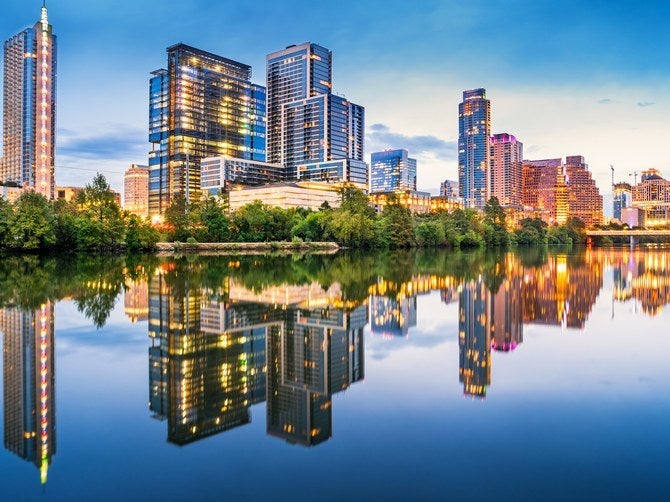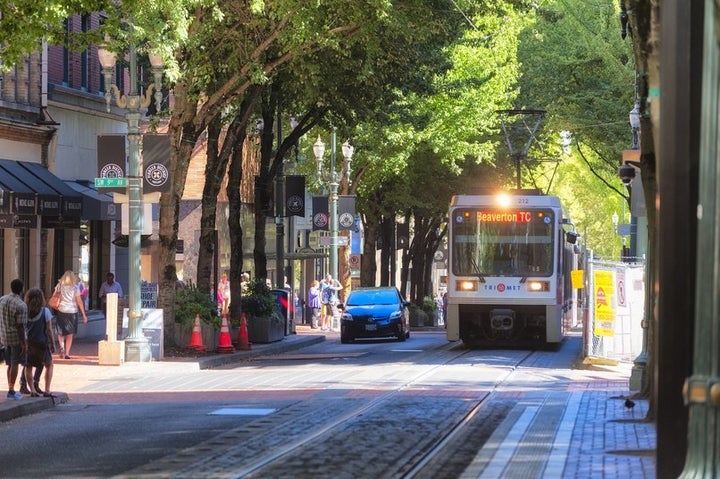For Architectural Digest, by Megan Johnson.

In 2017, Austin, Texas is ranked as the greenest city in America.
They say it’s not easy being green, but some American cities sure make it look like it is. The marketing lead generators at ListShack have compiled data that determines the top 10 greenest cities in the United States, and it’s safe to say there are some surprising results. In the spirit of Earth Day on April 22, here’s a breakdown of America’s most environmentally friendly cities according to ListShack.
While five out of ten of the greenest cities are located in the Northeast, the number-one spot went to the hipster haven of Austin, Texas, and its surrounding area of Round Rock. With a population of 2,000,860, Austin scored the top slot by a landslide thanks to its 5.113 LEED buildings per every 1000 residents. Its title can also be attributed to the .097 miles of bike lanes per every 10,000 residents, demonstrating that commuters are ditching their cars in favor of pedaling their way to work and thereby shrinking their carbon footprint. There’s also .16 farmer’s markets for every 10,000 residents, .94 electric car plug-ins for every 10,000 people, and .145 percent of the city area is parkland.
Coming second is Portland, Oregon, and its surrounding areas, while the Washington, D.C./Arlington/Alexandria, Virginia, area snags the number-three spot. Rounding out the top five is Greater Boston, which includes neighboring Cambridge, the high-end suburban enclave of Newton, and its surrounding areas; and the cumulative area of San Jose, Sunnyvale, and Santa Clara, California. The rest include New York/Newark/Jersey City all the way into Pennsylvania; followed by Hartford/West Hartford/East Hartford, Connecticut; then Providence/Warwick, Rhode Island; San Francisco/Oakland/Hayward; and finally Cincinnati, Ohio, and its neighboring areas in Kentucky and Indiana. Coming in with honorable mentions are Seattle; Tucson, Arizona; San Diego; and others.

The public train in downtown Portland, Oregon.
The rankings were determined through an evaluation of metropolitan statistical areas (MSAs) that have a population of over 1 million people. The U.S. Census Bureau describes an MSA as an “area [that] contains a core urban area of 50,000 or more population.” This explains why the statistics of many of the cities included incorporate outlying counties that are socially and economically integrated with the urban core.

An image of Washington, D.C., one the greenest cities in America, during the spring cherry blossom season.
Each city was analyzed based on five factors, or "green" data points: The number of LEED certified buildings per each 1,000 residents, the percentage of the city's land area that is parkland, the number of miles of bike lanes per 10,000 residents, the number of farmers' markets per 10,000 residents, and the number of electric car plug-ins per 10,000 residents. Population also played a role when determining the rankings; everything was brought to scale by looking at the factors per either 1,000 residents or 10,000 residents so the largest MSAs wouldn't win just based on their size.
More from Architectural Digest:

